Proof positive that Kronk is best used as a garnish and not the main course. Yes, the entirety of the main cast, including all of the voice actors, reappear in this entry, but many of them are underutilized. Would it have killed Disney to focus instead on Yzma and her scheming? She’s at least entertaining and diverse enough a character to hold a narrative built around her, which is not true of her once time sidekick. Poor dimwitted Kronk... your movie is like three mediocre episodes of a non-existent tv series jammed together. Kronk may have a new groove but it’s grossly out of tune.
Kronk’s New Groove
 Posted : 5 years, 7 months ago on 1 November 2019 07:38
(A review of Kronk's New Groove)
Posted : 5 years, 7 months ago on 1 November 2019 07:38
(A review of Kronk's New Groove) 0 comments, Reply to this entry
0 comments, Reply to this entry
Leroy & Stitch
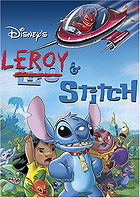 Posted : 5 years, 7 months ago on 1 November 2019 07:37
(A review of Leroy & Stitch)
Posted : 5 years, 7 months ago on 1 November 2019 07:37
(A review of Leroy & Stitch)Leroy & Stitch is clearly the “wrap-up” episode of the franchise with all the experiments reunited, the major characters continuing plot points from Stitch! The Movie to their conclusion, and an Endgame-like “gang’s all here” montage of them fighting the bad guy(s). It’s …just kinda there? Dr. Hamsterviel remains a lackluster guiding force as an antagonist, cute for a multi-episode arc but not much more, but at least the film ends with us getting the warm fuzzies that are built into the franchise’s best moments. Nothing holds a candle to the original, but none of these are the grandiose embarrassments of Return of Jafar or Kronk’s New Groove.
 0 comments, Reply to this entry
0 comments, Reply to this entry
Lilo & Stitch 2: Stitch Has a Glitch
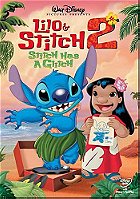 Posted : 5 years, 7 months ago on 1 November 2019 07:37
(A review of Lilo & Stitch 2: Stitch Has a Glitch)
Posted : 5 years, 7 months ago on 1 November 2019 07:37
(A review of Lilo & Stitch 2: Stitch Has a Glitch)68 minutes to basically give a “love conquers all, even death” message to charming characters in endearing ramshackle narrative that does nothing but dilute the brand. Welcome to more of these direct-to-video Disney exercises in making profit above all else. Don’t get me wrong, the film industry is a business above all and its commerce above art, with art being an only incidental by-product, but Disney can do better than this. Any emotive response is beamed in from your feelings about the characters from the first movie as everyone is noticeably off here, and there’s nothing generated from the narrative that builds towards an authentic emotional reaction. It’s just another run through the franchise with diminishing returns and characters/actions being entirely inappropriate for what has been previously established.
 0 comments, Reply to this entry
0 comments, Reply to this entry
Stitch! The Movie
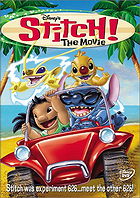 Posted : 5 years, 7 months ago on 1 November 2019 07:37
(A review of Stitch! The Movie)
Posted : 5 years, 7 months ago on 1 November 2019 07:37
(A review of Stitch! The Movie)Less of a sequel movie and more clearly a pilot for the eventual series where we’d meet all 625 prior experiments to Stitch, Stitch! The Movie is… fine, I guess? As these direct-to-video franchise chum exercises go this one isn’t particularly egregious or noteworthy. The chaotic heart of Lilo & Stitch is smothered here in sitcom-y tropes and setups. No one is entirely out of character, but something is clearly “off” about the world. I suppose a vague blandness is better to the torpedoing these products, which is really all that are in its purest cynical form, have done to other beloved Disney franchises. How’s that for a ringing endorsement on the cover art?
 0 comments, Reply to this entry
0 comments, Reply to this entry
24 Karat Gold: Songs from the Vault (Deluxe)
 Posted : 5 years, 7 months ago on 1 November 2019 04:50
(A review of 24 Karat Gold: Songs from the Vault)
Posted : 5 years, 7 months ago on 1 November 2019 04:50
(A review of 24 Karat Gold: Songs from the Vault)No, it’s not quite a compilation album of songs Stevie Nicks has sat on over the years, but it’s also not really an album of new material, either. It’s somewhere between these two points. These were various demos that Nicks had worked on throughout the years before finally deciding to finish and release them.
What emerges is easily her best album since 2001’s Trouble in Shangri-La, and that includes both her greatest hits and live album releases in my estimation. Nicks is back in folky rocker territory with material that elucidates her penchant for verbose storytelling and elliptical symbols. Her character essays and tributes, like “Mabel Normand” and “The Dealer,” are far sharper than they were on the flabby, generic In Your Dreams.
Sure, 24 Karat Gold is a purely reactive creation. Recorded in a flurry after Nicks learned that the original demos were bootlegged and released, but that act spurred Nicks into finding her witchy fire again. She’s still detached and remote as many of these songs originate from somewhere between 1969 and 1995, so what the present-day Nicks is going through is as mysterious as ever. Her crystalline image of benevolent, love spurned manic pixie dream girl remains intact, and no one can do it as well she has. No one ever will.
We’re the better for Nicks culturally for her feminine mystique creating a sparkly, flowy mythical world. Her yearning for independence is continually at odds with a yearning for romantic love, and how to balance it all with her personal achievements. 24 Karat Gold offers up the ability to overdose on undiluted Stevie Nicks with no Lindsay Buckingham, Tom Petty, or Jimmy Iovine to sharpen or refine her weirdness. It may be too much for the casual fan, but I find it elucidating as a portrait of an icon in her purest form, with all the contradictions that implies.
DOWNLOAD: “Belle Fleur,” “The Dealer,” “Starshine”
 0 comments, Reply to this entry
0 comments, Reply to this entry
Feast on Scraps
 Posted : 5 years, 7 months ago on 1 November 2019 04:50
(A review of Feast On Scraps)
Posted : 5 years, 7 months ago on 1 November 2019 04:50
(A review of Feast On Scraps)In February 2002, Alanis Morissette released Under Rug Swept, the album that contained one of her last hits, “Hands Clean,” repeated here in an acoustic format. She quickly embarked on her Toward Our Union Mended tour but couldn’t let this particular set of songs go. So just in time for the holiday season came Feast on Scraps a CD/DVD combo-pack that slapped an album of B-sides with a live performance.
I won’t be talking about the exhausting DVD, which clocks in at the complete 21 song setlist plus interludes of her and her band writing and recording the album and acting goofy between tour stops. This is purely about the collection of songs that was the major selling point for my high school devotee of Morissette’s diary-set-to-music style of pop/rock.
The annoying New Age platitudes that would engulf her music soon enough, like on tracks like “Out is Through” and “Excuses” on So-Called Chaos, are burbling here on “Offer” and “Sorry 2 Myself.” While her disquiet attitude about fame, a reoccurring theme on Supposed Former Infatuation Junkie, appears here on “Purgatorying,” and “Sister Blister” finds her reexamining her internalized misogyny and biases. Yet she’s consistently at her best when scaling back to look at matters of the heart, like on aching, vulnerable “Simple Together” or the raging “Bent for You.” Any of these tracks would’ve comfortably slide onto Under Rug Swept, and I frankly would’ve dropped “A Man” for nearly any of them.
While Feast on Scraps may not be an essential purchase for casual fan, it is a fun little glimpse into the breadth of material an artist can write for one album before winnowing the choices down to a manageable eleven or twelve. It remains worth mentioning just how “out there” Morissette is willing to put her interior emotional life on display for both recognition of the same in her listeners and processing through her art. Yes, it’s sometimes a pretentious slog, but growing up is tricky business regardless if you’ve sold millions of units as a nineteen-year-old or not.
DOWNLOAD: “Fear of Bliss”
 0 comments, Reply to this entry
0 comments, Reply to this entry
Akira Kurosawa’s Dreams
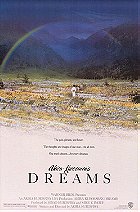 Posted : 5 years, 7 months ago on 1 November 2019 04:27
(A review of Dreams)
Posted : 5 years, 7 months ago on 1 November 2019 04:27
(A review of Dreams)The thread that ties together the eight vignettes in Akira Kurosawa’s Dreams is his cinematic surrogate, often wearing his trademark hat. Like any anthology film, Dreams is only as good as any individual segment. While others sparked my engagement more, the ending results is still like that of Kurosawa making eight different arty short films and gifting us with the wide range of his imagination.
This surrogate is often as passive witness to the actions, and only occasionally an active participant. The autobiographical and the folkloric or socio-political, sometimes all of the above, blend together in ways that are sometimes baffling but more often beautiful. “Sunshine Through the Rain” and “The Peach Orchard” display a flare for the personal as projected through a grandly theatrical lens. “Sunshine,” in particular, is one that lasts in the mind for its élan in demonstrating a wedding procession of fox spirits in real time and proudly artificial in its purely cinematic grandiosity.
Some of the more overtly political get too prosaic for me, like “The Blizzard” and its tale of humanity’s struggle with nature’s hostility and indifference to our suffering. I enjoyed when Mieko Harada showed up as the personification of the blizzard and acted as a tormenting siren, but I found it one that needed to be worked through more than engaging. A similar thing happened with “Mount Fuji in Red” where I enjoyed the lo-fi special effects work but found the overall tone of it vaguely hysterical even if I found myself agreeing with the wider message.
“The Weeping Demon” picks up where “Mount Fuji” leaves off as Japan has now become an irradiated wasteland populated by mutated millionaires and politicians being punished for their actions in a karmic realignment. This segment is fascinating for the ways in which it marries the personal, political, and folkloric into a successful and unnerving spectacle of horned demons bathing in blood-like fluids and surrounded by enormous dandelions. Kurosawa’s proxy terrified exit from the narrative is a mysterious descent into the depths. Depths of the psyche or man’s ability to wreak carnage? Probably somewhere between the two.
“Crows” finds the Kurosawa stand-in literally diving into the works of Vincent van Gogh and eventually meeting the artist, played here by Martin Scorsese. It’s an imagined meeting that finds two obsessive visualists having a meeting of the minds as van Gogh’s declarations of being devoured by his art and the rejuvenating powers of the sun feel like Kurosawa projecting his own ideas upon the famous painter. If Dreams provides a clearer glimpse of the towering cinematic artist, then it is most nakedly candid here as Kurosawa gets lost in the works of others only to become his own artist. He turns his own psyche into a blank screen to project various rummaging thoughts, and manages to make something at once deeply personal, painterly, and universal.
 0 comments, Reply to this entry
0 comments, Reply to this entry
Don't Look Now
 Posted : 5 years, 7 months ago on 1 November 2019 04:27
(A review of Don't Look Now (1973))
Posted : 5 years, 7 months ago on 1 November 2019 04:27
(A review of Don't Look Now (1973))When he was (finally) presented with his (overdue) Honorary Academy Award in 2017, Whoopi Goldberg specifically highlight Donald Sutherland’s enigmatic, gripping, haunted performance in Don’t Look Now as a primary example of his talents as an actor. She not displayed great taste in cherry picking this film as a standout of his exemplary career but underscoring just how humane and tangible his work in this film remains. Sutherland plays a man grappling with the death of a child, now genuflecting for an escape from the all-encompassing grief he and his wife are experiencing.
His wife (Julie Christie) indulges in the spiritual and supernatural world, frequenting a psychic and praying for visions of the future where the darkness is worked through. While he buries himself in here and now, indulges in memories of the past, and goes about restoring a dilapidating church. Don’t Look Now barely contains a present tense as the threads of the past, present, and future maneuver through and around each other throughout.
Grief is the major ghost haunting the characters and their actions. It lingers around the margins of the frame as a subliminal ache that never finds a fissure to seep through and explode the stasis they’ve built for themselves. It’s important that Sutherland’s grieving father is restoring a church as it is a blunt symbolic gesture. If you’re looking for faith and the balm of reason, many others have found it in a church. Not only are the performances marked by restraint, but so is the film as a whole only provides a few moments of release.
Are there really ghosts in Don’t Look Now? In a sense, yes, but they’re not the type typically found in your horror movies. These are ghosts of past traumas that will not be ignored or forgotten from the emotional spheres of these characters live any time soon. This is why Sutherland tries to hide from the blind clairvoyant and her sister only to laugh at the futility of his efforts and there wider comedic childishness. You cannot outrun or hide from your traumas, and they will manifest and haunt you until faced and worked through. All the game face carrying on will not heal these scars.
Look further at how the streets and canals of Venice become an Escher-like maze that taunts the couple at various points. A sense of place and location slowly evaporates until an uneasy displacement and confusing takes over. It’s like they’ve managed to physical their emotional state by getting lost in the city streets they’ve taken on as a temporary home. You’d think they’d know their way around, but something is amiss, and is that red-cloaked specter their dead daughter come back to haunt/taunt them?
Don’t Look Now generates a persistent feeling of claustrophobia and unease that turns its domestic drama into the stuff of horror and nightmares. This couple still cares deeply for each other, and there’s a maturity to the treatment of their relationship and their struggle for a return to normalcy that only aides the continuous wait for the bottom to drop out. It would probably be easier to digest Don’t Look Now if the daughter’s ghost that’s come between them caused the couple to lash out against each other, but no such luck. The truth of the daughter’s ghost is besides the point. Domestic bliss and comfortable normalcy will never return no matter how much they valiantly try for it.
 0 comments, Reply to this entry
0 comments, Reply to this entry
Damn the Defiant!
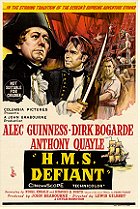 Posted : 5 years, 8 months ago on 21 October 2019 04:43
(A review of Damn the Defiant!)
Posted : 5 years, 8 months ago on 21 October 2019 04:43
(A review of Damn the Defiant!)HMS Defiant, or Damn the Defiant! depending, is another entry in the early 60s Napoleonic Wars sea sagas from the Brits. Much like its brethren, Billy Budd and the Brando Mutiny on the Bounty, Damn the Defiant! is a creaky old-fashioned entertainment during an era when the cinematic landscape was changing. The best thing about it are the central performances from Alec Guinness and Dick Bogarde, and everything else is a bit of a slog to get through. Guinness is the humanistic captain with Bogarde as the sadistic second-in-command. There are hints of a mutiny brewing, but it takes forever for the payoff to come around and the planting isn’t that absorbing. Damn the Defiant! could’ve used more of the fire found in the Americanized title instead of the stately Britishness of the original.
 0 comments, Reply to this entry
0 comments, Reply to this entry
The Prisoner
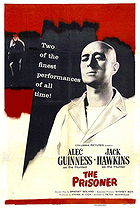 Posted : 5 years, 8 months ago on 21 October 2019 04:43
(A review of The Prisoner)
Posted : 5 years, 8 months ago on 21 October 2019 04:43
(A review of The Prisoner)The Prisoner plays out less like an actual film and more like a televised stage performance – mainly interiors, two great actors doing a two-hander, and an overall lack of specifics that plays better on stage than in a movie camera. When and where exactly does this story take place? What’s the wider theme/point at play here? There’s so much left up to the viewer that practically any reading is accurate given the nebulous nature of the material.
This nebulous nature opens the material up to a wide variety of interpretations, and a glimpse of its reception at the time proves this point. The Venice Film Festival rejected it as anti-communist, Ireland banned it for being pro-communist, Italy rejected it for being anti-Catholic, and all of that seems like hysterical pearl-clutching. Onstage this kind of mystique can work wonderfully, but the camera lens requires more solid architecture to build the mystique from. There are no character names, there’s no country named, and there’s no definitive timeline other than post-World War II.
The Prisoner feels like a sketch given life by Alec Guinness and Jack Hawkins. They play two men that were ostensibly on the same side until the current political regime took over. Now Hawkins is an interrogator for the political machinery while Guinness is a religious man who uses the pulpit to potentially disseminate irreverent messages about the regime. Guinness is full ripening of his talents here transitioning from comedy to serious drama here and plumbing the depths of the role. He’s especially affecting in the final third where the narrative tilts into melodrama, but Guinness is self-possessed and broken in a way that feels too real for the strained credibility of the wider work.
That final stretch is a dozy as The Prisoner all but collapses in on itself straining for wider significance that it cannot reach. It feels too frightened to go as dark and real as contemporaneous works, instead settling for a semi-gloss treatment that cannot sustain the threat of torture or psychological warfare hinted at or displayed. The film is a tete-a-tete of words upon words, ideals against ideals, and its two actors deliver the goods consistently whenever, or in spite of, the rest of the film functioning as merely competent.
 0 comments, Reply to this entry
0 comments, Reply to this entry
 Login
Login
 Home
Home 95 Lists
95 Lists 1531 Reviews
1531 Reviews Collections
Collections